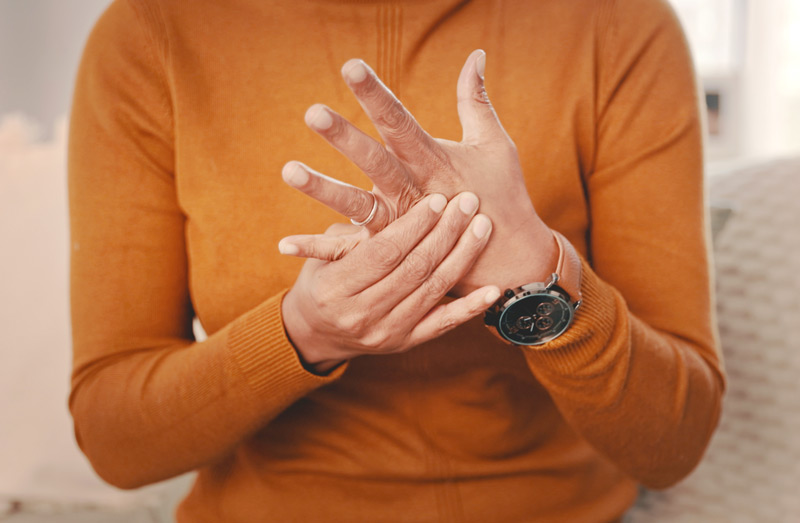Ring avulsions are rare, but they’re serious injuries. The best way to avoid one is to prevent them by removing your rings and jewelry before working with tools, equipment or doing anything that might tug on your fingers and hands.
Advertisement
Cleveland Clinic is a non-profit academic medical center. Advertising on our site helps support our mission. We do not endorse non-Cleveland Clinic products or services. Policy

A ring avulsion is an injury to one of your fingers that happens when a ring you’re wearing is suddenly pulled with a strong force. They are serious injuries that frequently lead to amputation.
Advertisement
Cleveland Clinic is a non-profit academic medical center. Advertising on our site helps support our mission. We do not endorse non-Cleveland Clinic products or services. Policy
The most common causes of ring avulsions are workplace accidents, falls and sports injuries. How long it takes to recover form a ring avulsion depends on what caused it and how severely damaged your finger is.
Anyone wearing a ring can experience a ring avulsion. If you wear a ring and work with your hands around machinery or other equipment you have a higher risk of experiencing a ring avulsion.
Athletes who wear rings while playing sports — especially contact sports like football — have a higher risk too.
Ring avulsions are rare. They’re only around 5% of emergency room visits for arm and hand injuries each year.
Depending on how severe the ring avulsion is, it can cause a lot of damage to your finger. Ring avulsions can be traumatic injuries that require a finger amputation. The damage can also cause blood clots and bone fractures in your damaged finger.
Ring avulsions can damage any part of your finger including your:
Symptoms of a ring avulsion include:
Ring avulsions can be caused by any force that pulls on your ring hard enough to damage your finger.
Advertisement
Common causes include:
Your healthcare provider — or providers in the emergency room — will diagnose a ring avulsion with a physical exam and imaging tests. They will look at your finger and see if it’s still receiving any blood circulation.
Your provider might use imaging tests like X-rays or an ultrasound to assess the damage to your finger. These tests will give them a complete picture of your finger and all its bones and tissues. This will help them diagnose other damage like bone fractures or blood clots.
Your provider will use a scale called Urbaniak classification to define the severity of your ring avulsion:
Ring avulsions may also be referred to as involving degloving (pulling your skin and soft tissue off your bone).
Almost all ring avulsions require surgery. Which type of operation you’ll need depends on the classification of the ring avulsion and how severely damaged your finger is. If it’s possible, your surgeon will reattach your finger and restore its blood flow and function. Many people with class 3 avulsions require permanent amputation.
In addition to reattaching your finger, your surgeon might need to perform a skin graft around your finger to repair the avulsion’s degloving.
How long your recovery will take depends on which type of ring avulsion you had any other damage to your finger you experienced. It can take anywhere from several weeks to more than a year before you’ll be able to use your finger again. Talk to your surgeon or provider for a specific healing timeline.
Ring avulsions are serious injuries. You should expect a long recovery time, and you might never be able to use your finger the way you could before the injury. There’s also a chance your finger will need to be amputated.
You’ll probably need to miss some work or school while you’re recovering. Talk to your surgeon or healthcare provider about when you can resume working or other physical activities after a ring avulsion.
Advertisement
Ring avulsions are rarely life-threatening injuries, but there’s a good chance that a ring avulsion will permanently affect how you use your hand.
Don’t wear rings or other jewelry while working with tools or heavy equipment. Always be aware of your surroundings, and — if possible — take your rings off before doing anything that might be dangerous.
Make sure any rings you do wear aren’t loose on your fingers. The looser a ring fits, the more wiggle room it has to get caught on something while you use your hand.
There’s some evidence that wearing a silicone ring can prevent ring avulsions. Silicone rings and wedding bands have become more popular in the last few years. Because this is a relatively new trend, experts are still studying it.
Silicone rings break or tear easier than metal rings. This means a silicone ring should break before your finger can get pulled with enough force to injure it.
Go to the emergency room right away if you’ve experienced a ring avulsion or any other trauma. If your finger was removed during the injury, bring it with you to the ER. Don’t put it directly on ice.
Advertisement
Ring avulsions are serious injuries. Fortunately, they’re rare. Even if you need an amputation or lose part of your finger, a ring avulsion isn’t usually a life-threatening condition. The best way to avoid a ring avulsion is to prevent one from happening. Take your rings off before doing any activity that might cause your fingers to get caught or pulled.
Advertisement
From sudden injuries to chronic conditions, Cleveland Clinic’s orthopaedic providers can guide you through testing, treatment and beyond.

Last reviewed on 01/31/2022.
Learn more about the Health Library and our editorial process.